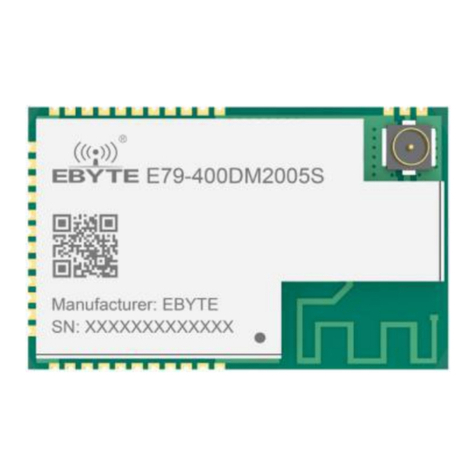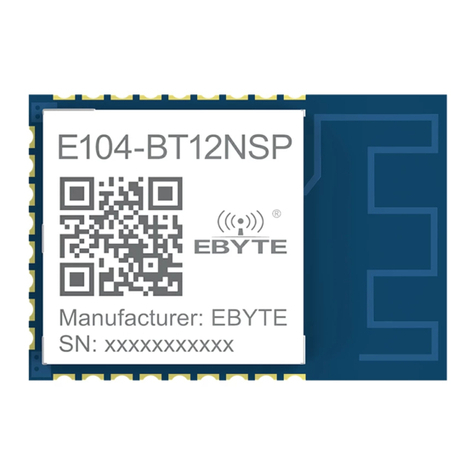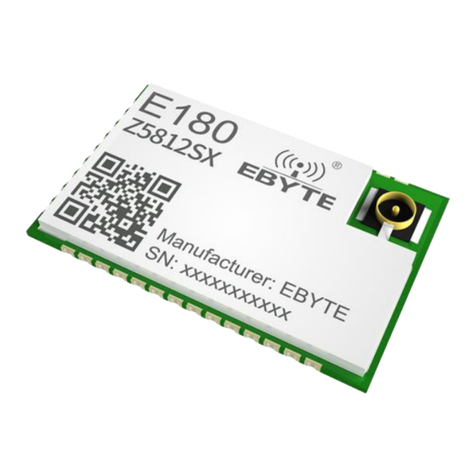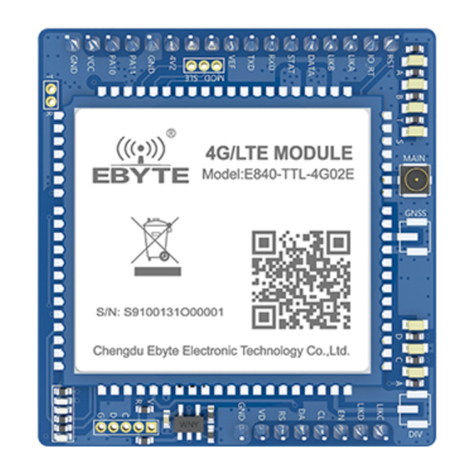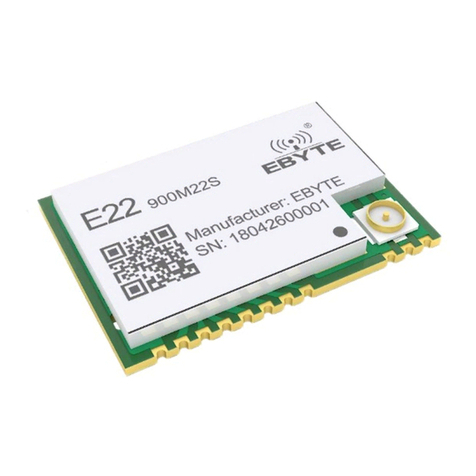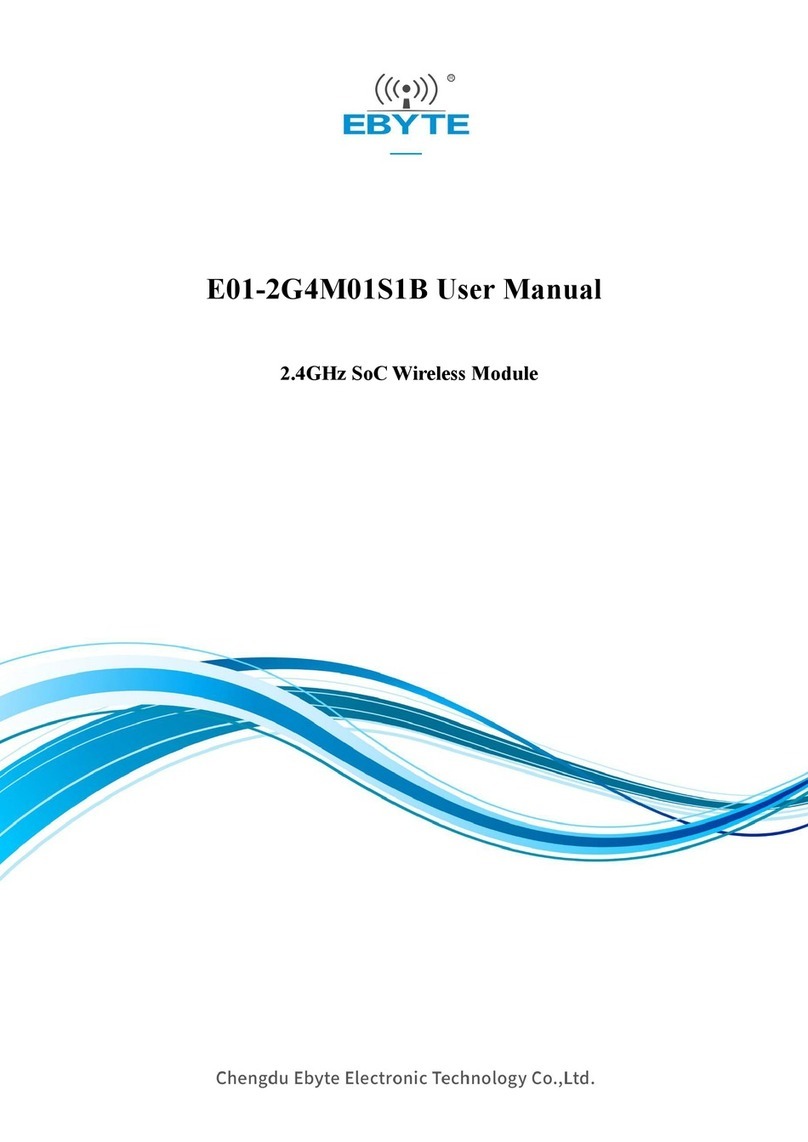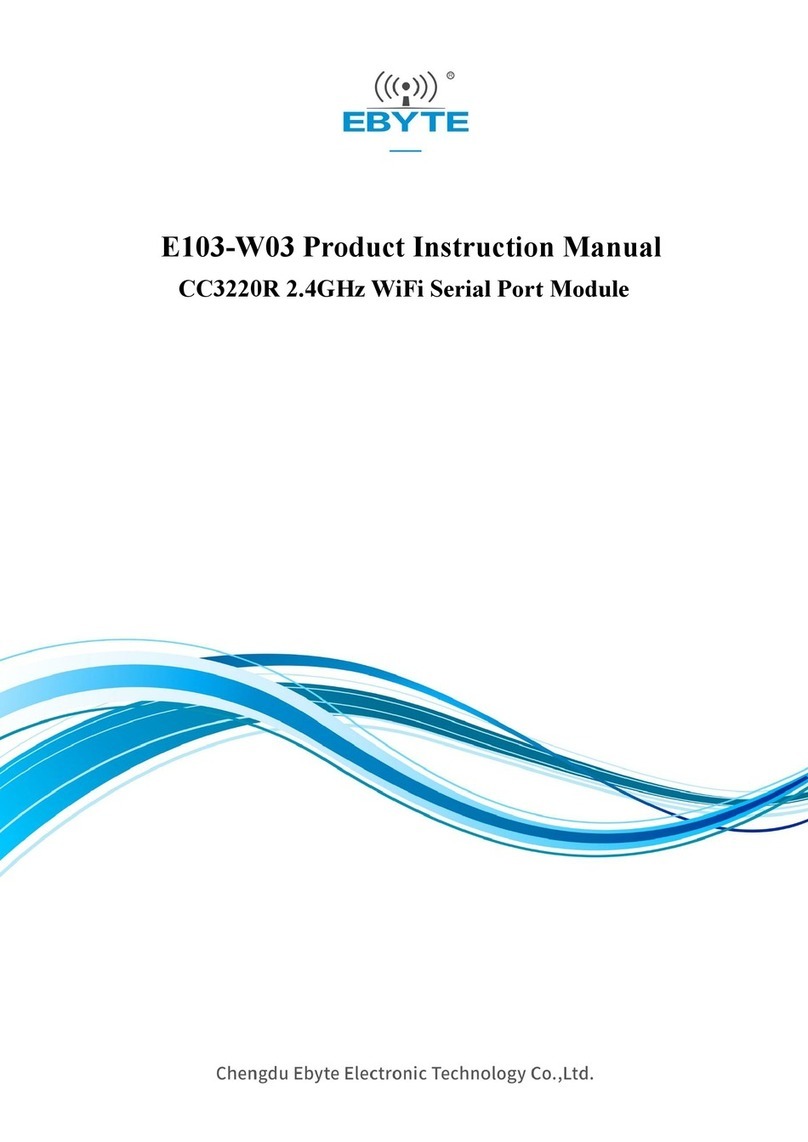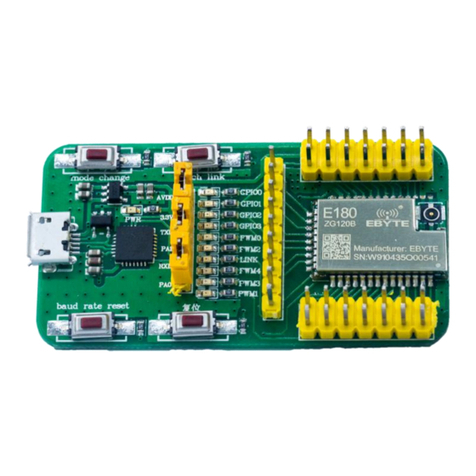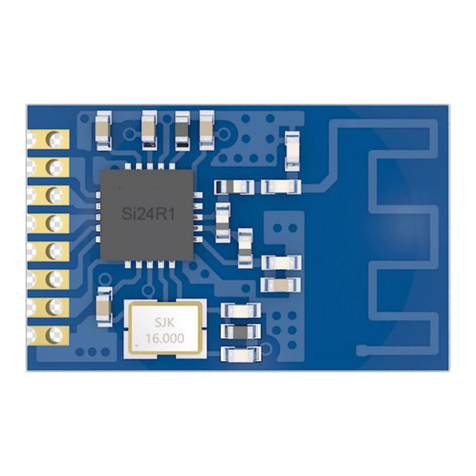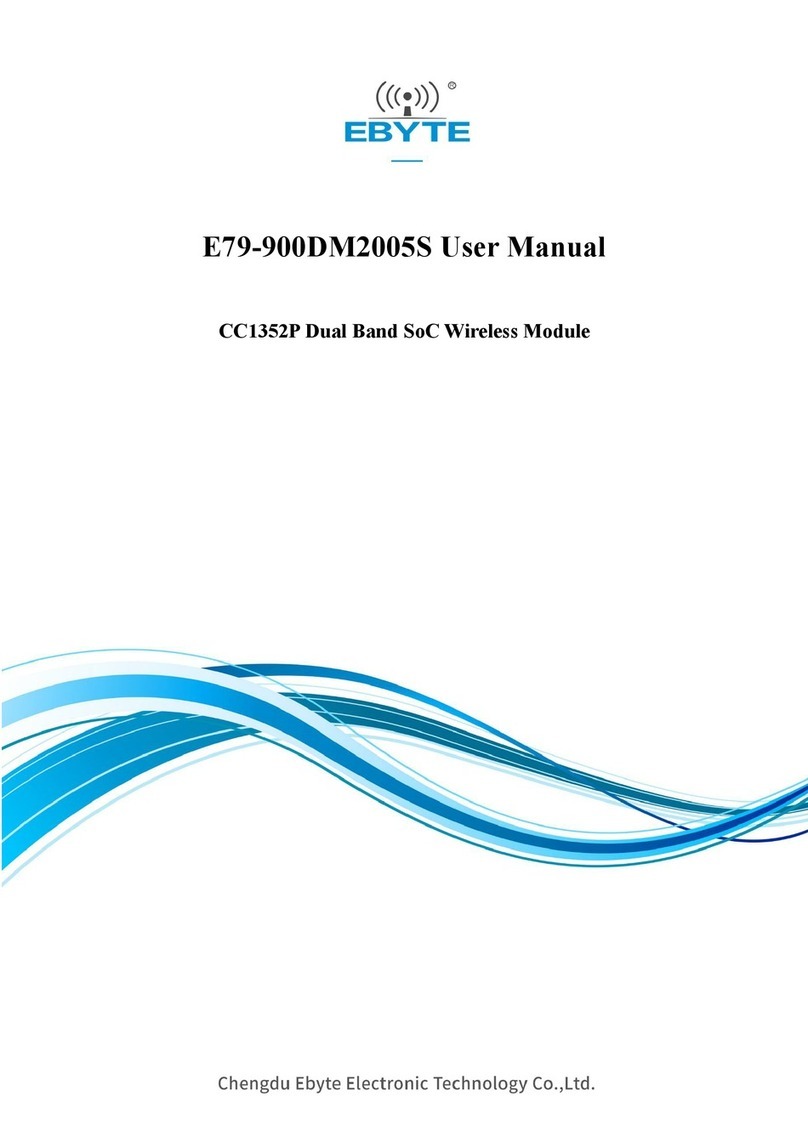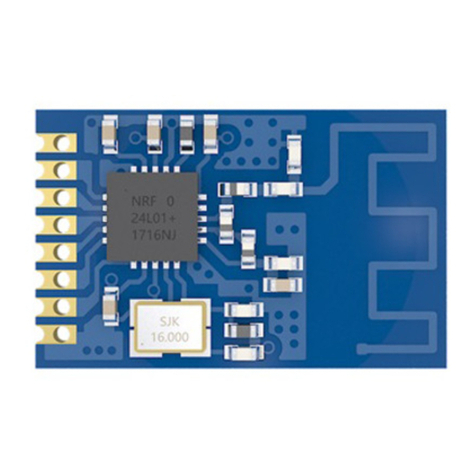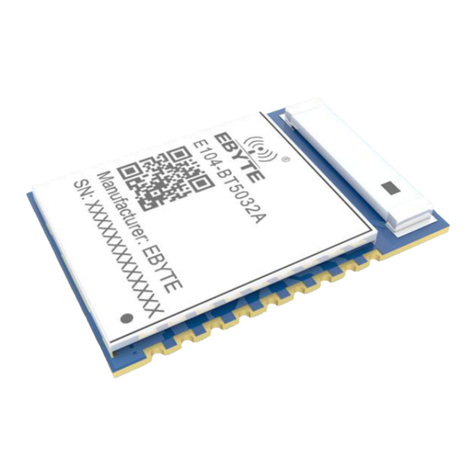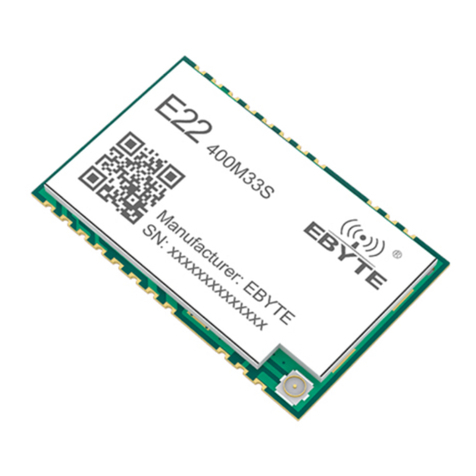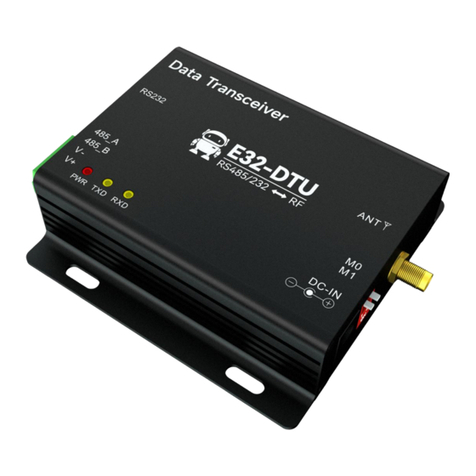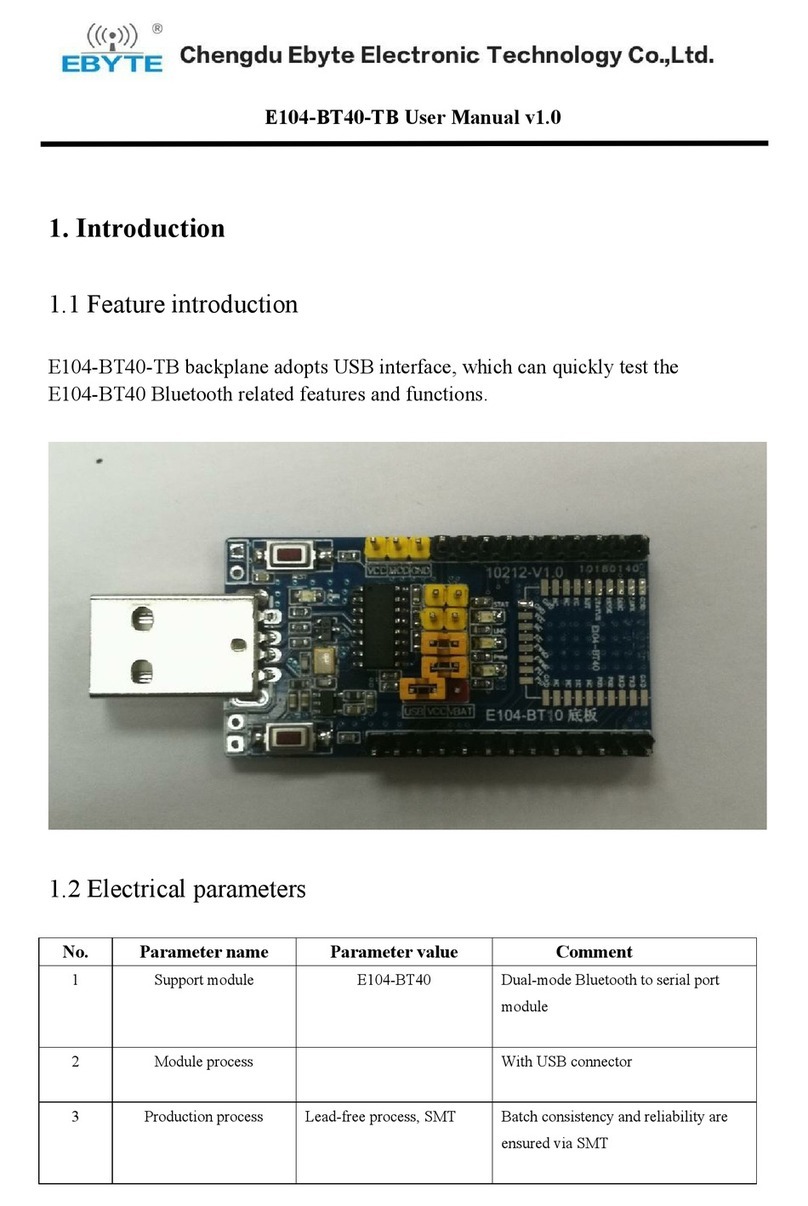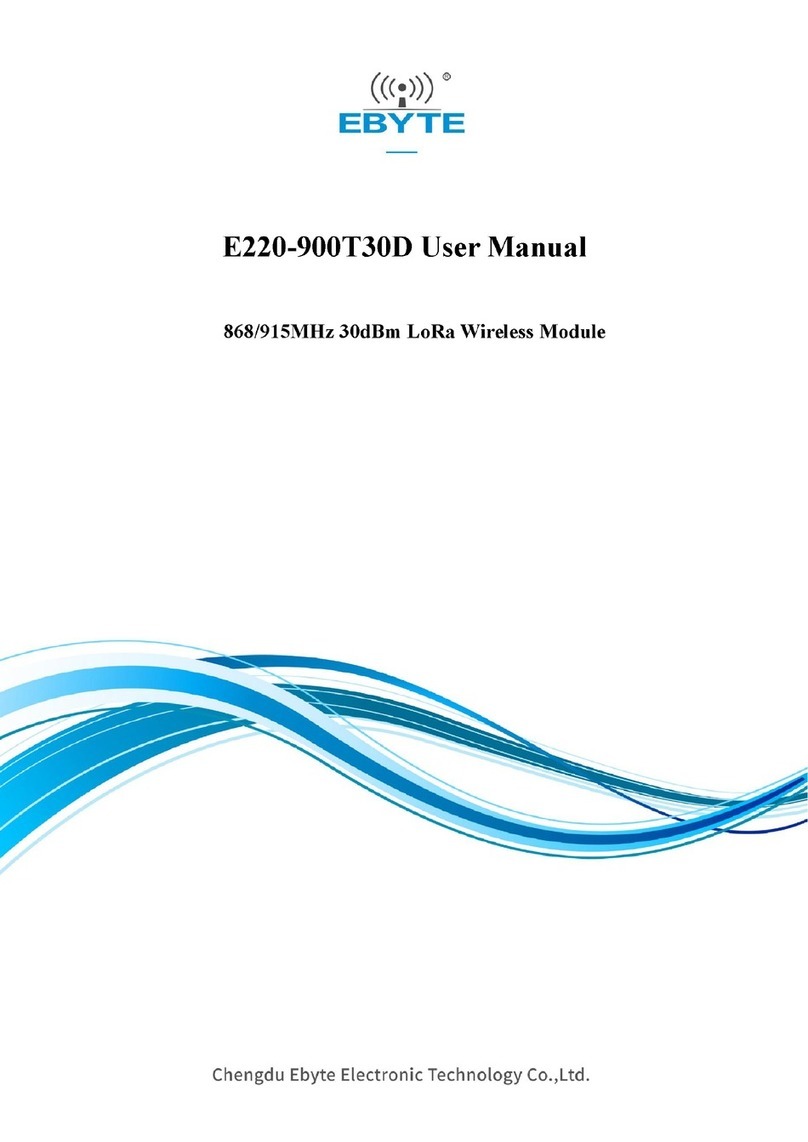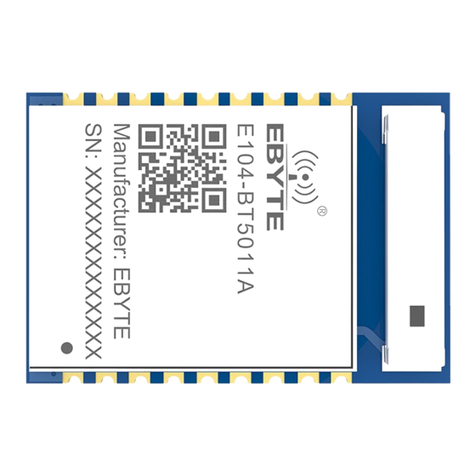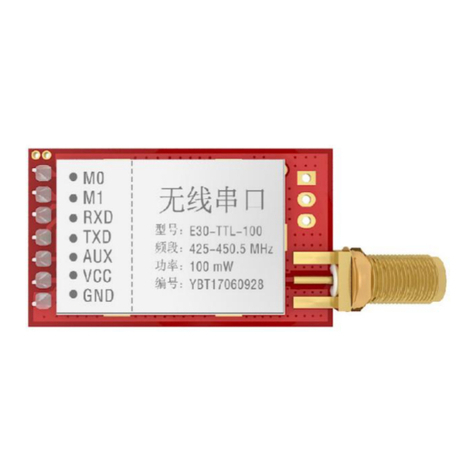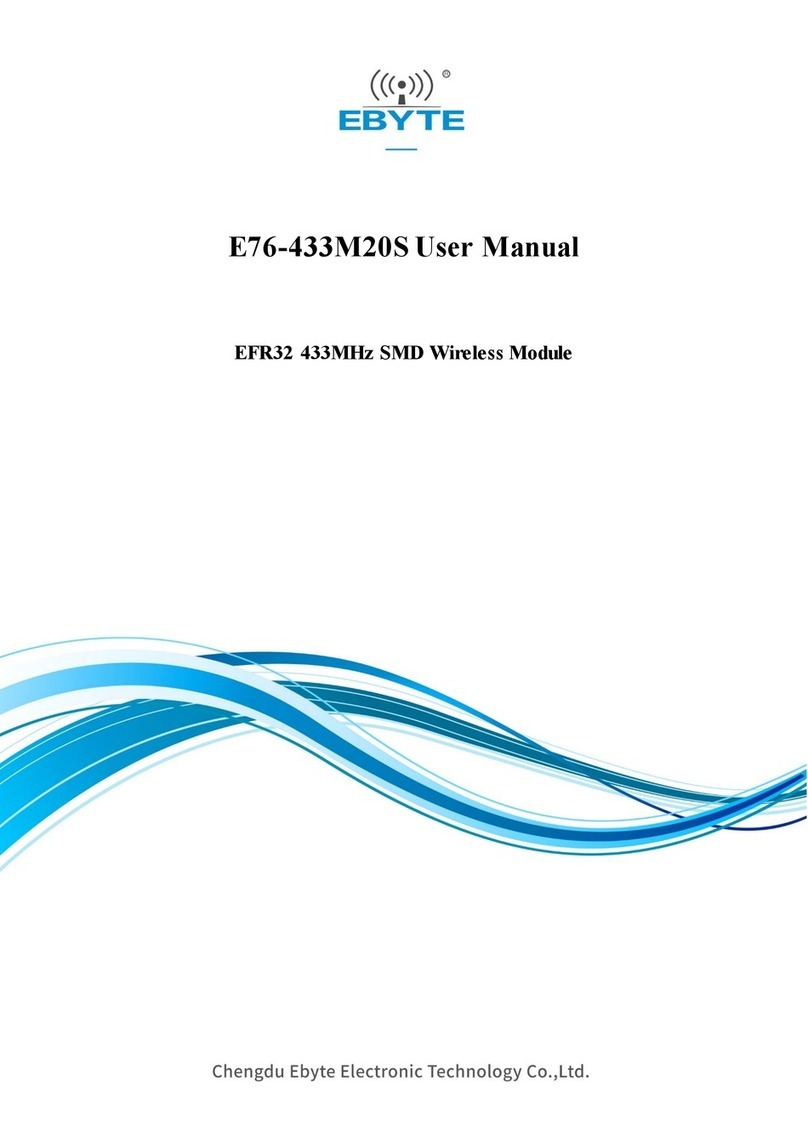1. Module introduction ZigBee
1.1 ZigBee introduction ZigBee
ZigBee technology is a two-way wireless communication technology that features short range, low complexity,
low power, low speed and low cost.
There are three types of logical devices in the ZigBee network: Coordinator, Router, and End-Device. The ZigBee
network consists of a Coordinator and multiple routers and End-Devices.
These devices own the following functions:
(1)Coordinator
As the first device in the network, the coordinator is responsible for starting the entire network. . The
coordinator selects a channel and a network ID (also known as the PAN ID, the Personal Area Network ID), and then
starts the entire network.
Coordinators can also be used to help establish bindings between security layer and application layer in the
network.
Note that the role of the coordinator mainly involves the network startup and configuration. Once these are
done, the coordinator works like a router (or disappears /go away). Due to the distribution characteristics of the
ZigBee network itself, the operation of the entire network is not dependent on the existence of the coordinator.
(2)Router
The main functions of the router: to allow other devices to join the network, multi-hop routing and to assist
communication of its own battery-powered son node end-devices.
Typically, the router is expected to remain active, so it must use the main power supply. However, when using
the tree group network mode, it allows the routing operate once at an interval of a certain cycle, so battery can be
used for power supply.
(3)End-Device
The end-device does not have a specific responsibility for maintaining the network structure, it can sleep or
wake up, so it can be a battery-powered device.
1.2 Feature ZigBee
Automatically reconnect when losing network. When intermediate node in
network is lost, other networks automatically join or maintain the original
network. (Isolated nodes automatically join the original network, non-isolated
nodes maintain the original network.)
When the coordinator is lost and non-isolated nodes exist in the original
network, the coordinator can join the network again or coordinator of the
original network PAN_ID set by the same user join the original network.
